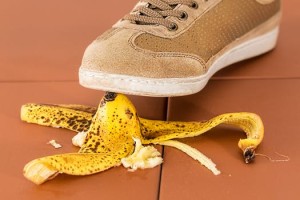Slip and Fall Accidents
Slip and fall accidents can be very costly for any business, whether they involve your employees or someone else legally on your premises. Each year these accidents result in thousands of workers’ compensation or third party liability claims. In fact, in 2015, slip and falls accounted for 28% of workers’ compensation and 39% of general liability claims.
For much of the country, this risk increases substantially with the winter weather season. What can you do to prevent these expensive claims? We’ve got a checklist for this as well, which includes
• Treat all exterior areas where you expect to have pedestrian and/or vehicle traffic. Once and done is not sufficient — inspect and treat areas of potential hazard frequently.
• Make certain the property has ample lighting during the shorter daylight hours of winter.
□ If contracting for snow and ice removal, make certain your contractor is timely in the removal of snow and/or treating to prevent icing, as many municipalities require appropriate actions be taken within specific timeframes.
□ Make sure your contractor is insured and you are contractually protected for their liabilities.
□ Watch the weather and don’t be caught by surprise.
□ If doing your own snow removal, have appropriate personnel, equipment and supplies on site (shovels, snow blowers, plows, ice melt, sand…).
□ Use caution before you or your employees clear non-owned adjoining properties, as doing so can create liability for your business.
□ Keep exterior drains and drainage areas clear of snow to prevent backup of water, freezing and refreezing.
□ Treat all exterior areas where you expect to have pedestrian traffic. Once and done is not sufficient; inspect and treat potential hazardous areas frequently.
□ Make certain there is ample outside lighting during the shorter daylight hours of winter.
□ Ensure walkways are free of debris and pitched to avoid ice collecting on them.
□ Ensure parking lot surface is smooth, clear and safe.
□ Winter can create hazardous conditions inside when people track in snow and ice, leading to wet and slippery floors inside.
□ If you use interior floor mats, make sure they are non-slip or appropriately secured.
□ Take action to keep floors dry and substance free. Use markers and signage to warn others of slippery conditions.
□ When the snow stops and is cleared be alert to thaw and refreeze conditions and treat appropriately.
□ Know that snow and ice on your roof can melt and create dangerous conditions below.
□ Educate your employees to inspect for and address conditions which could cause a slip, trip or fall.
Please contact your agent at Professional Underwriters Inc. for more information and quotes. puimich@profunderwriters.com
